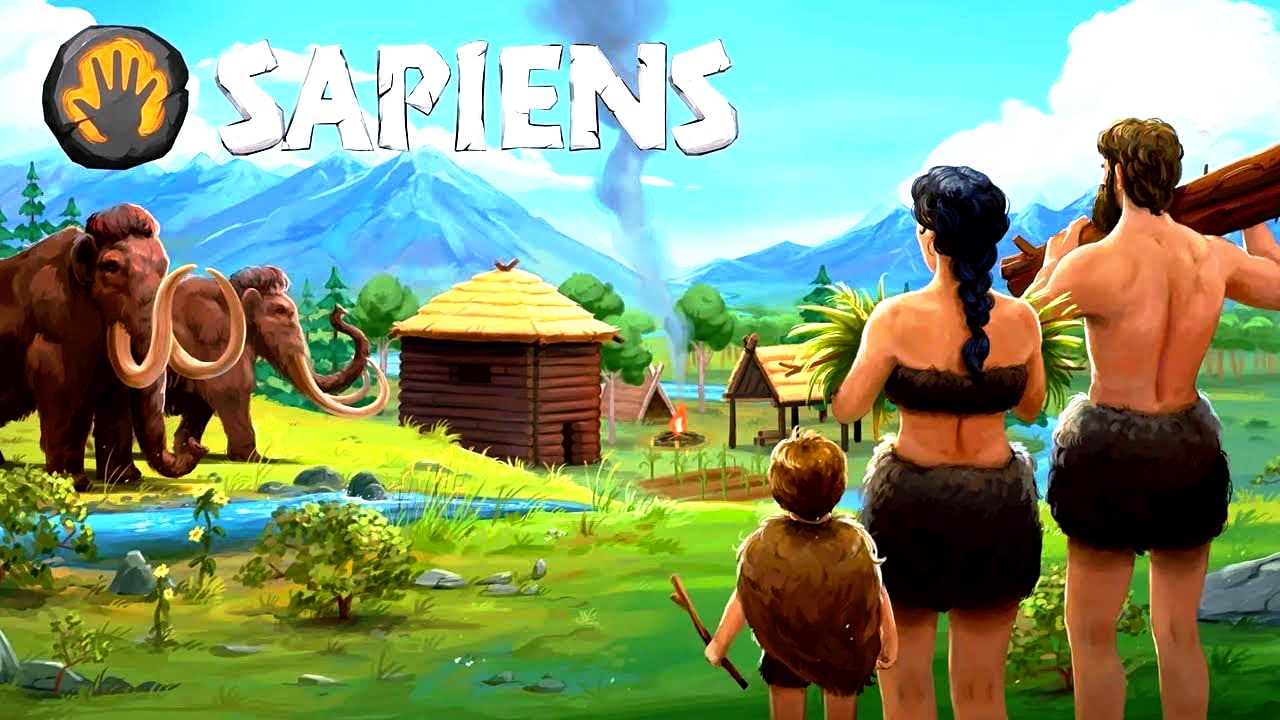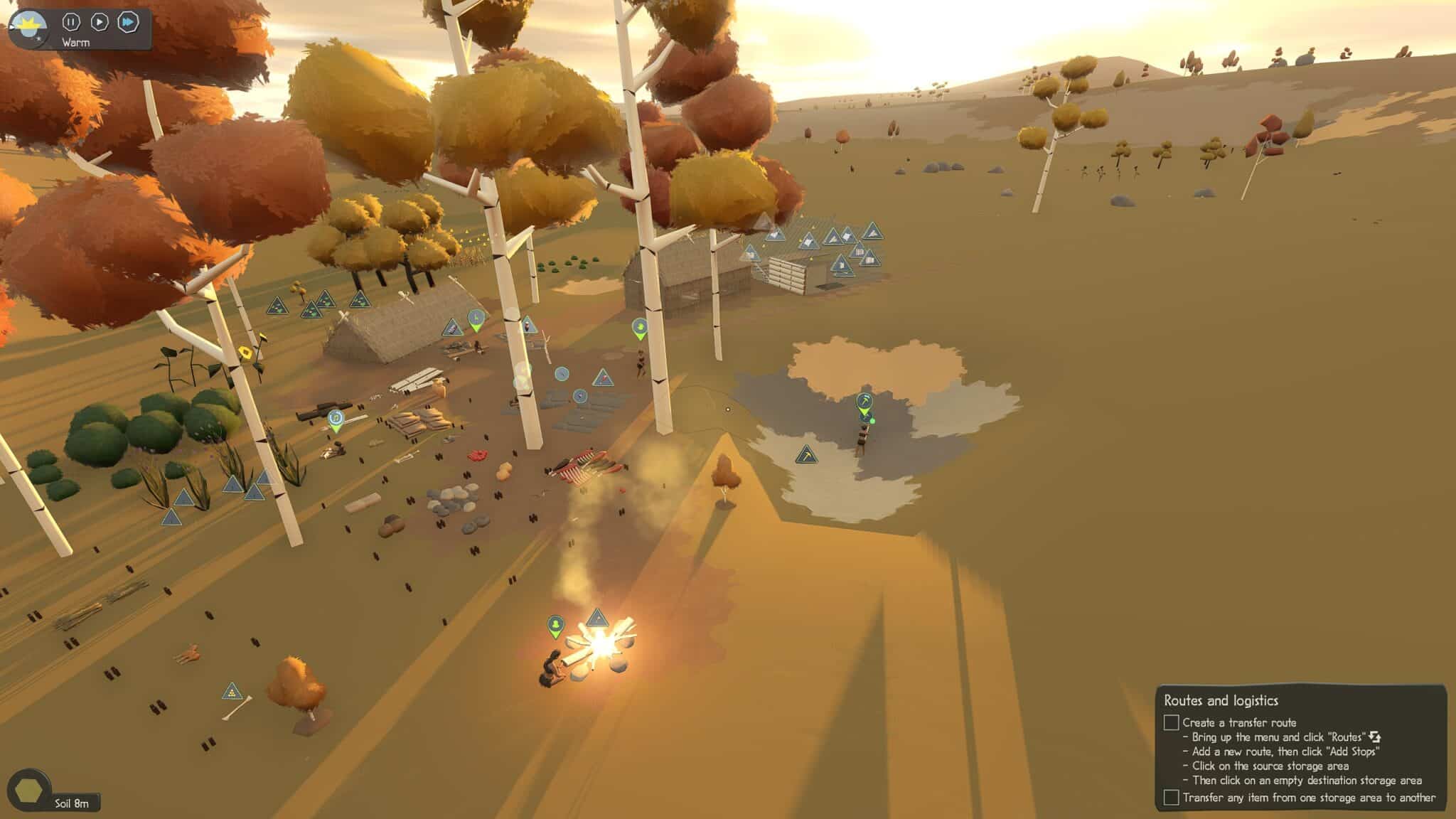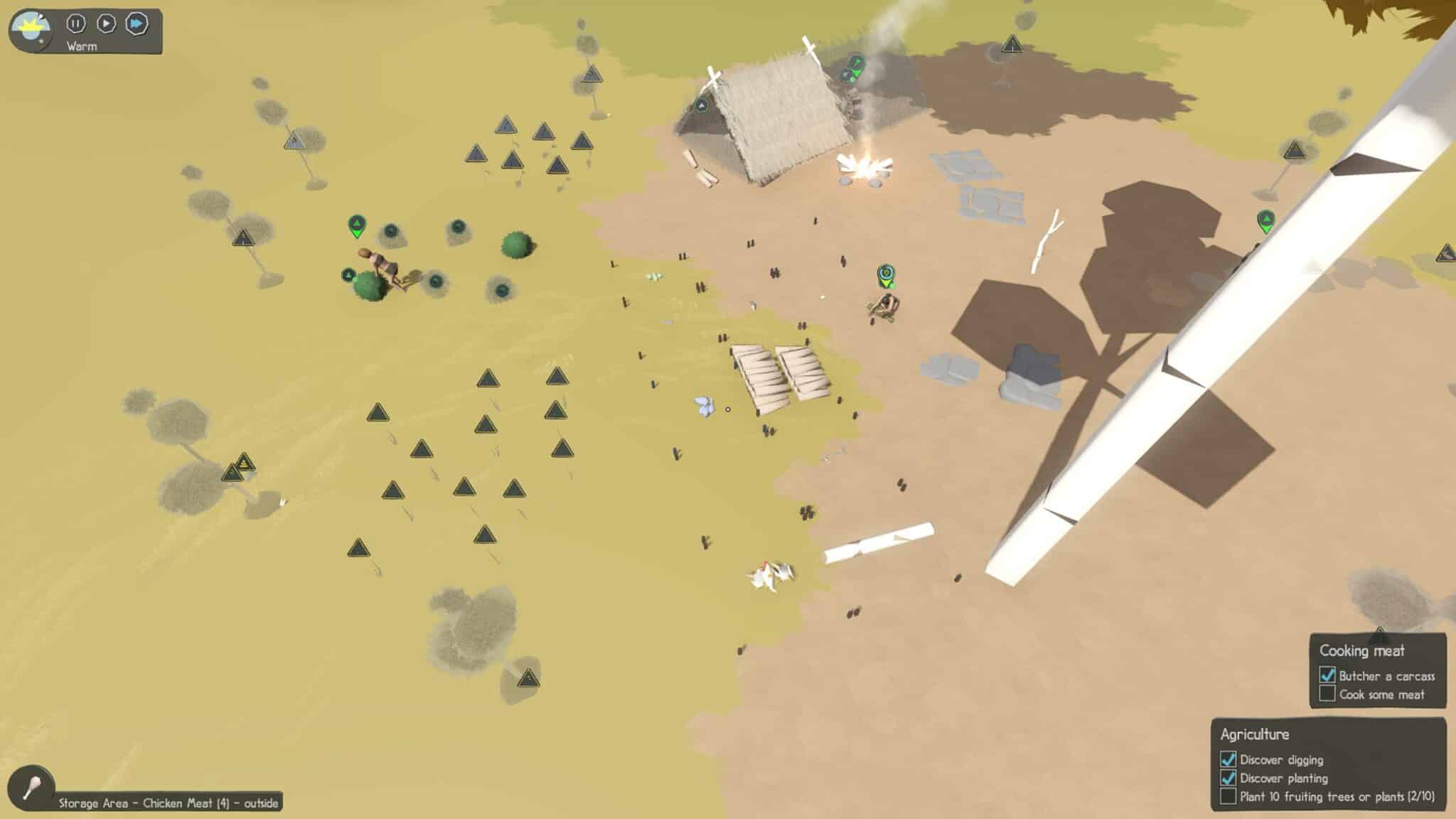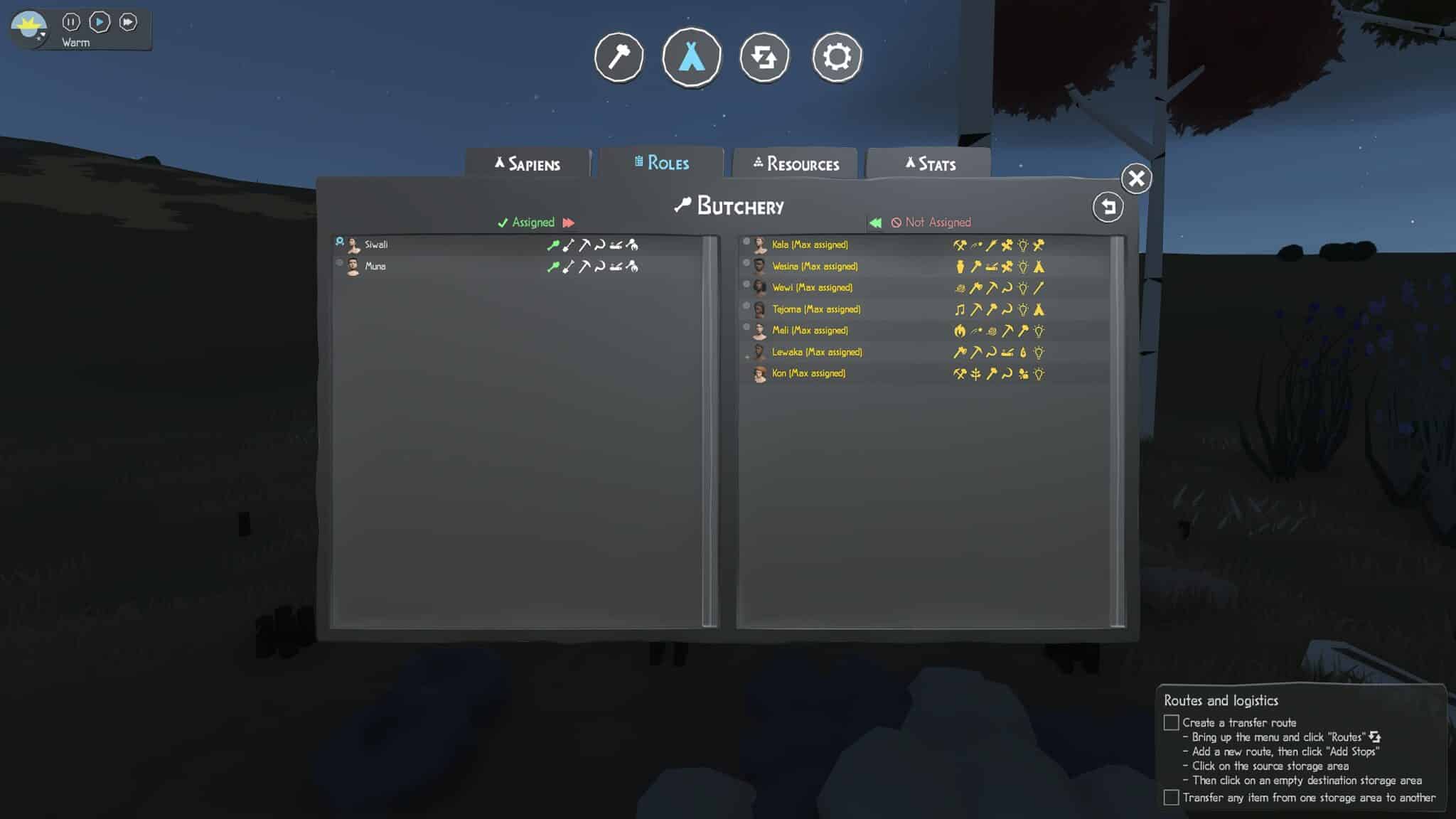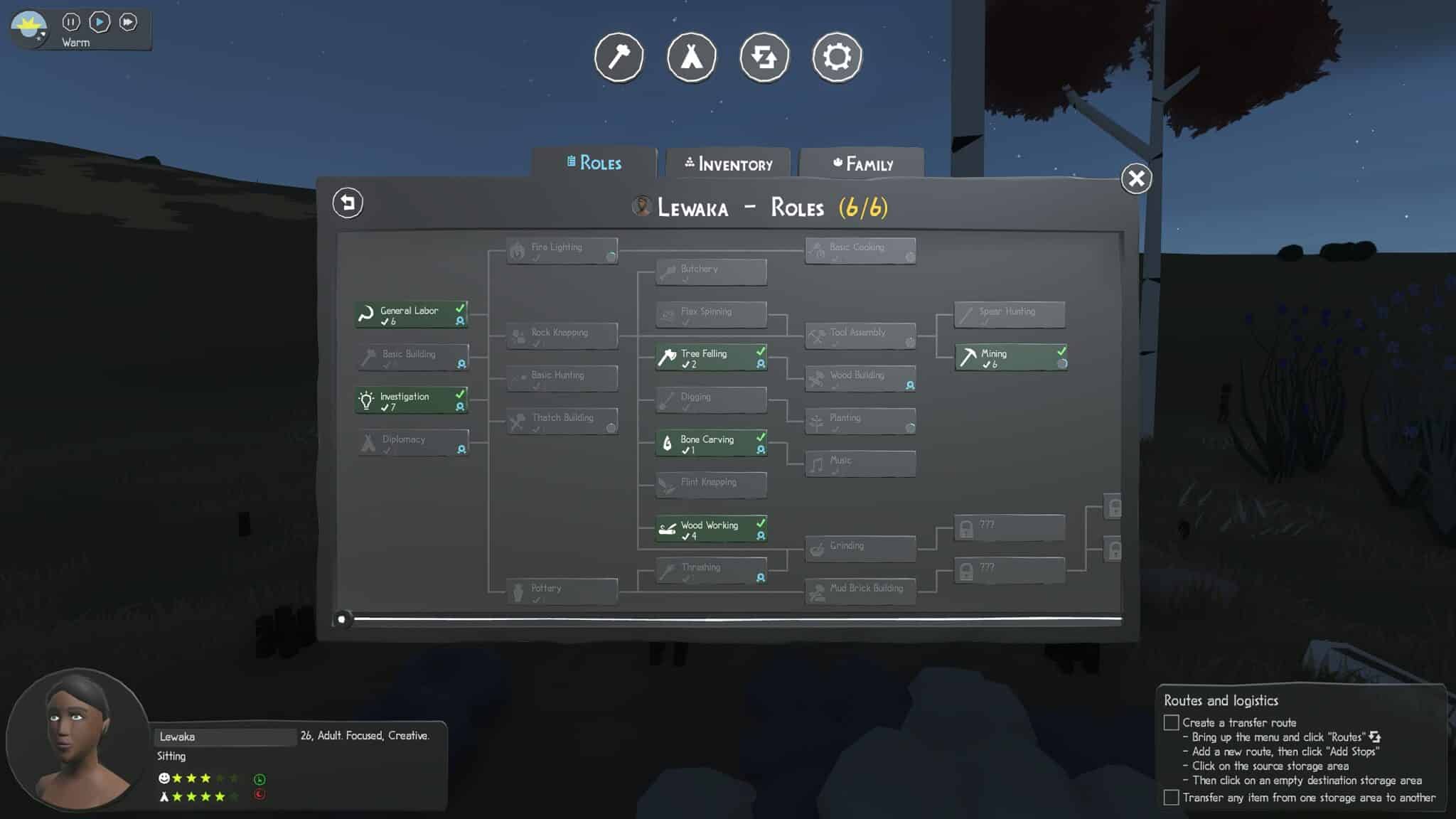Indie developer Dave Frampton builds a huge sandbox for simulation and building fun in the Stone Age. But is the flair of the unusual setting enough to warrant a buy recommendation?
Do you know why building games in earlier eras of human history are not sheer horror? Because you don”t feel the mosquito bites and ant bites! Someone once said: “For thousands of years, mankind has tried to get away from nature. Now it wants it back again.
And somehow that”s true, but somehow it”s also not true. Because nobody wants the snakes in the grass, the mosquitoes and rats, wolves and bears back. So it”s lucky that we have building games like Sapiens instead. There we can enjoy nature and re-enact the progress that took people centuries in reality in just a few hours.
Sapiens focuses on a rather unusual setting, namely the Stone Age. There are already some really good reviews on Steam. I took a closer look at how good the little indie game already is, who can already get it in Early Access and who should stay away from it.
Table of Contents
In the Stone Age, it takes stone…
Before you start a game in Sapiens, you select a small tribe with a handful of members on a procedurally generated world map. Whether you go to the tropics, the north or the temperate lowlands is up to you.
You start on a huge, endless map with nothing but your tribe members, who have individual strengths and weaknesses, gain experience in the activities they are doing anyway.
You now start giving instructions from the first person perspective. Cut some grass here, gather some branches there and some berries. To do this, the inhabitants independently divide themselves among these commissioned tasks according to their areas of responsibility and go about them one by one.
..and good ideas
As we are at the beginning of the Stone Age, your friends are still pretty stupid and have no idea about anything. In order to expand your knowledge about nature, you let the inhabitants investigate the environment.
After a while, they come up with ingenious and revolutionary ideas. For example, that you could build a simple shelter with branches and some grass. Or that fire is a really useful thing and you can chop down trees with the right tools.
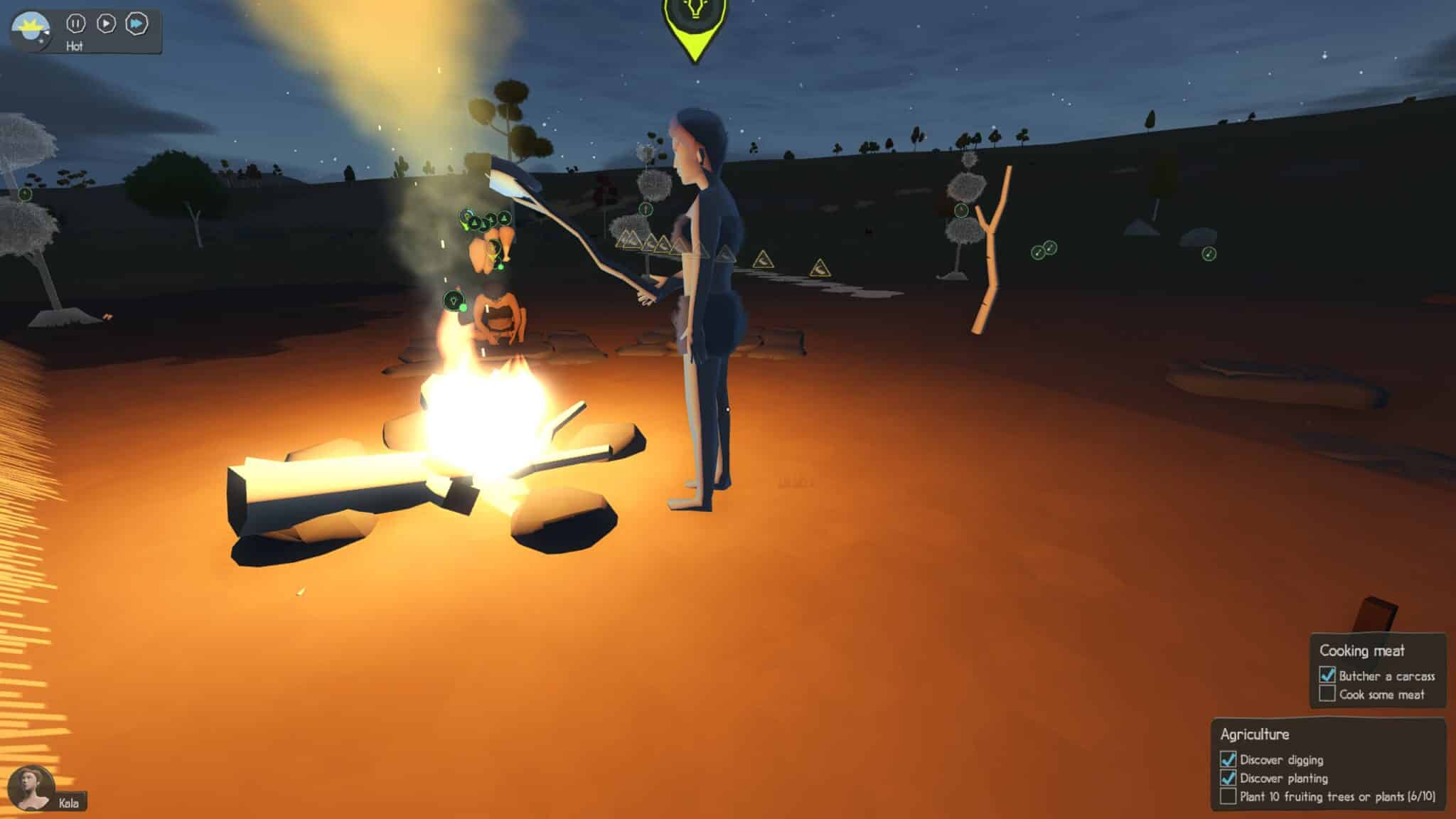
This is how the first hand axe, the campfire and successively larger structures, such as a wooden hut, are built. The building system is component-based, by the way, so you order each wall, floor and roof part individually. In this way, you can design buildings according to your wishes. However, the options are still quite limited, so there is hardly anything more than a square hut.
Even a small community needs a (working) plan
As you unlock more and more abilities through new incursions, you”ll slowly have to start managing your residents. Each of them can only cover up to six tasks. For example, if you learn to grow plants or hunt with a spear, you will have to assign at least one member of your community to this role and free him or her from general work such as cutting grass.
In theory this is well thought out, but in practice it is a bit annoying because it requires too many clicks and because you don”t get a very useful overview of who is doing what. A prioritisation system like in Rimworld would have made more sense.
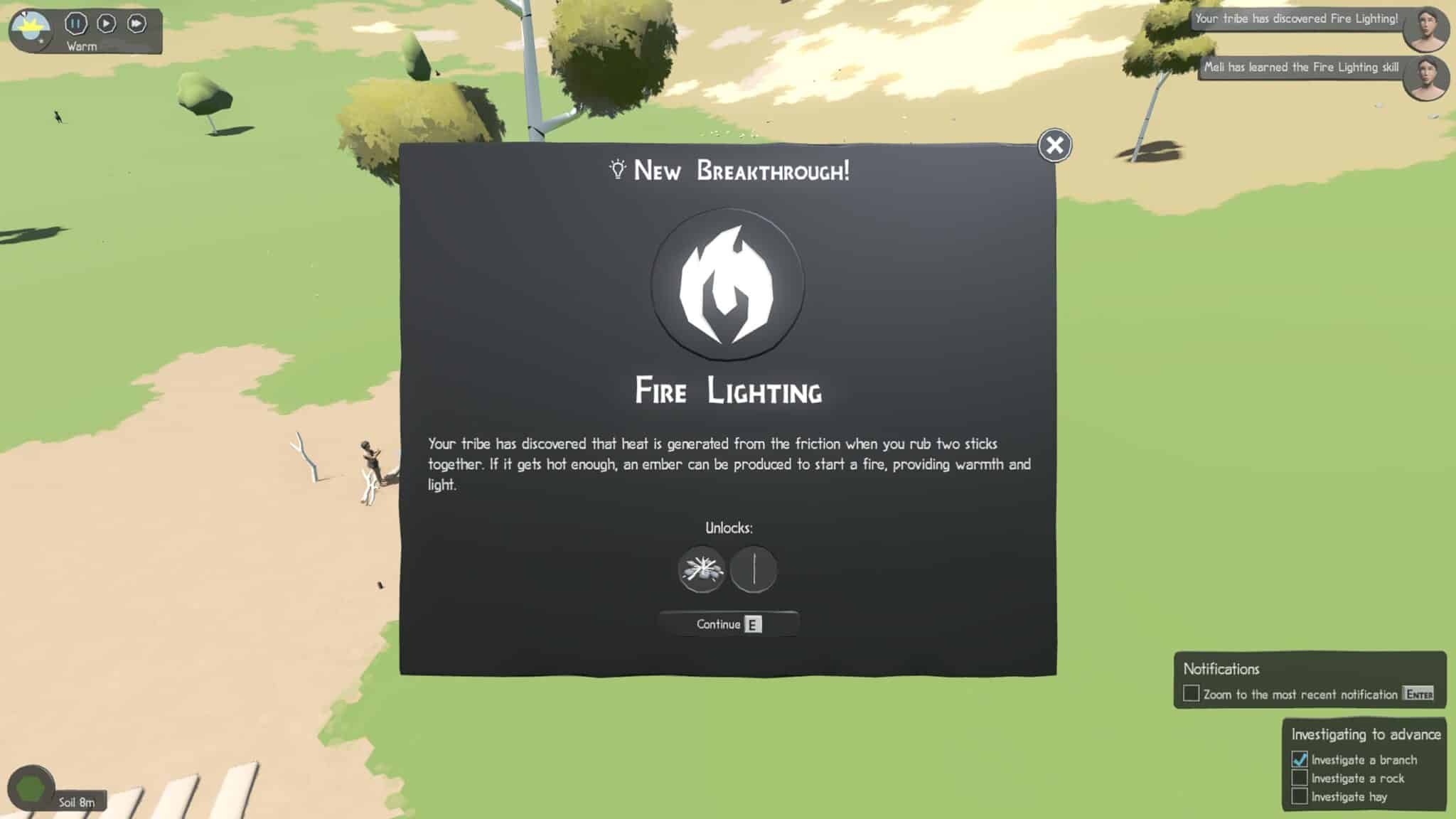
Living in the Stone Age offers no comfort
The uncomfortable implementation of control is generally a recurring theme. The biggest drawback to Sapiens is the low level of automation combined with fiddly controls and a hard-to-read interface.
Because the people in Sapiens don”t do anything on their own. You want to plant sunflowers? Then you have to tell people exactly which plant to pick the seeds from. To do this, drive over the wide map and look for sunflowers, click on the head of the sunflower with a small dot cursor and press “Collect seeds” in the interaction menu.
The worst part is that there is no frame tool. To select several plants at once, you have to go into a submenu and mark an area on the map in the most awkward way.
At first, though, Sapiens is cool because you immediately feel like an explorer in an untouched landscape. But as the tribe grows and eats the hair off your head, it becomes extremely tedious to manually commission every little thing. A simple “collect berries” command would be worth its weight in gold.
A lot of charm despite primeval graphics
But otherwise Sapiens plays very chilled out. Farming or mining takes a lot of time, the construction of a single building even more. Days and nights go by, sometimes new people arrive whom you can integrate into your tribe, sometimes you welcome new blood into the community who can already take on small tasks like playing music.
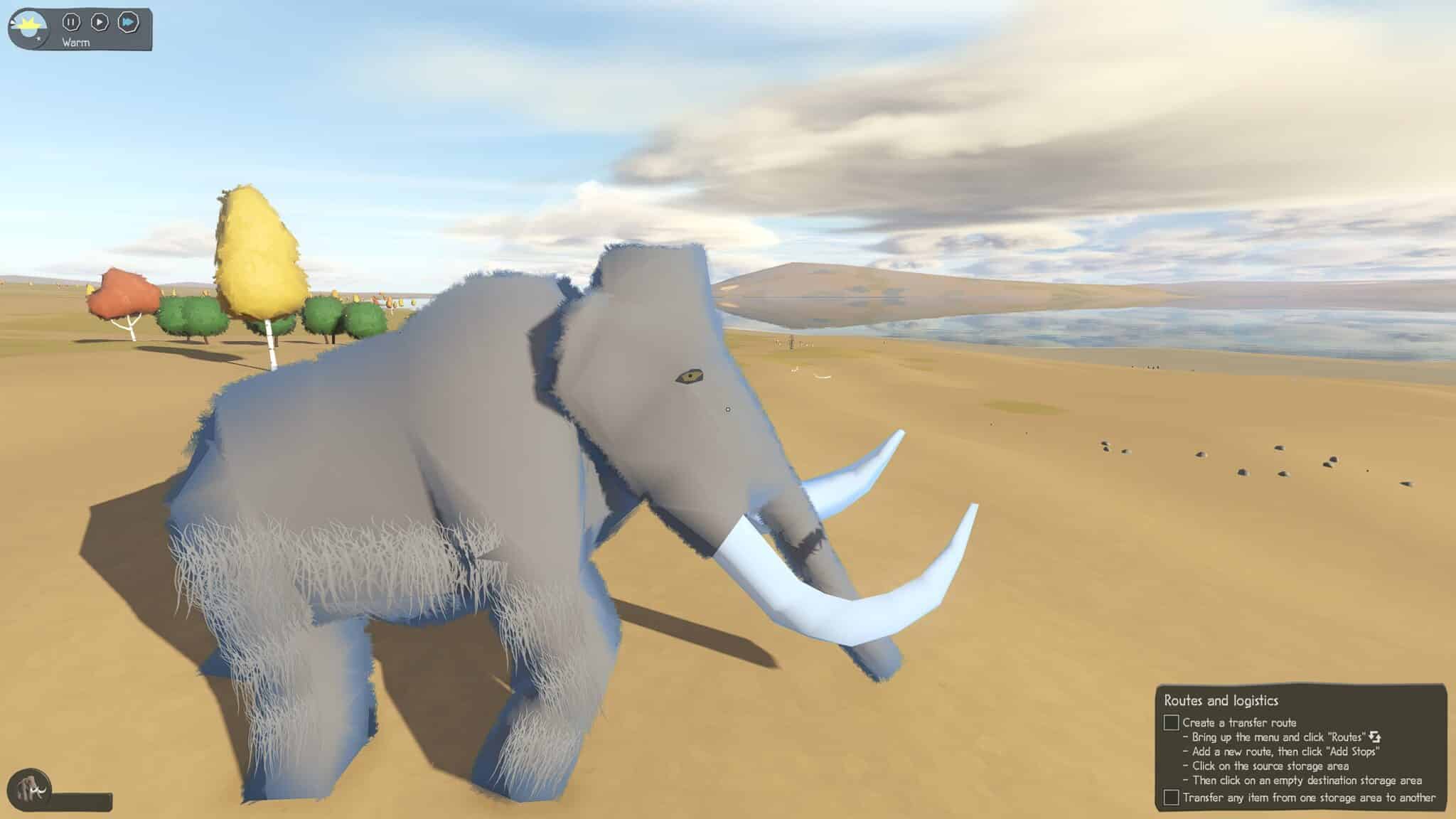
Despite the rudimentary and low-detail graphics,
Sapiens skilfully exudes a primeval charm, especially when mammoths suddenly stomp past your camp.
However, the title is not for graphics enthusiasts, if only because many of the animations are still very stiff or do not exist at all.
Sapiens don”t always make sense
From time to time the simulation breaks the immersion, for example when the tribe members don”t need water or trees grow faster than a hut is built. And the larger the community becomes, the more confusing everything becomes.
It can take some time before you realise what is wrong (for example, the lack of bones or stones for spearheads for hunting). This is because the small clues to missing resources or workers are difficult to decipher from far away.
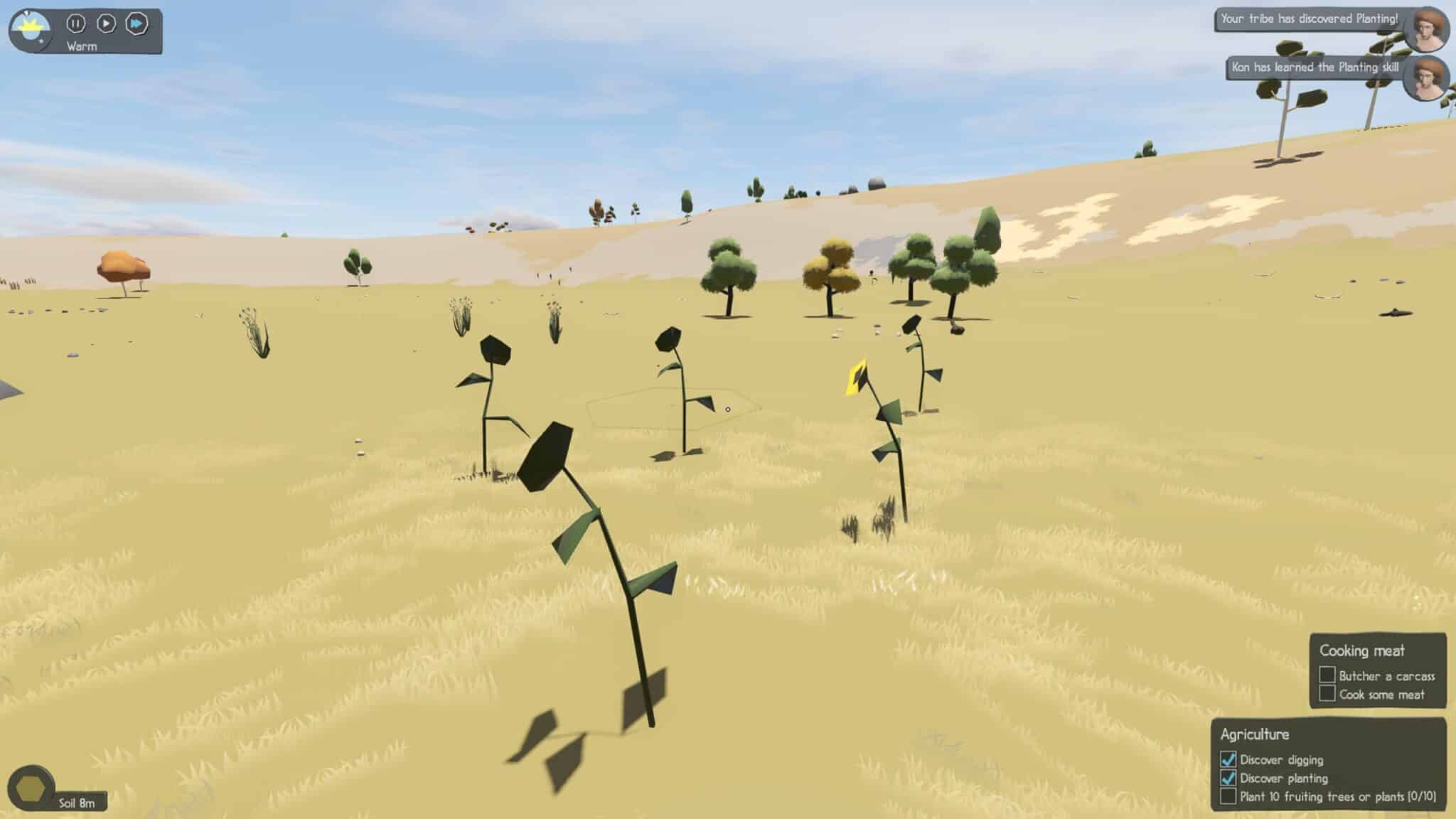
Technically, Sapiens also has room for improvement. During testing, I had several crashes and couldn”t get the game to continue running in the background. I would have liked to do something else in between on the second screen while the stone age people worked through the next twenty commands on our part in tedious work.
The future holds much in store – hopefully
And that brings us to the content that is still to come during the Early Access phase, which according to the developers can take many years. Currently, the technology tree ends at skills such as hunting with a spear, baking bread or making ceramic items.
Boats, fishing, riding and transporting goods are already planned. You will also be able to interact with other tribes, for example steal from them or fight them. At some point, the game is also supposed to progress to the Middle Ages, but these are pipe dreams for now. For the time being, the developer”s priority is a multiplayer mode and the continued support of modders.
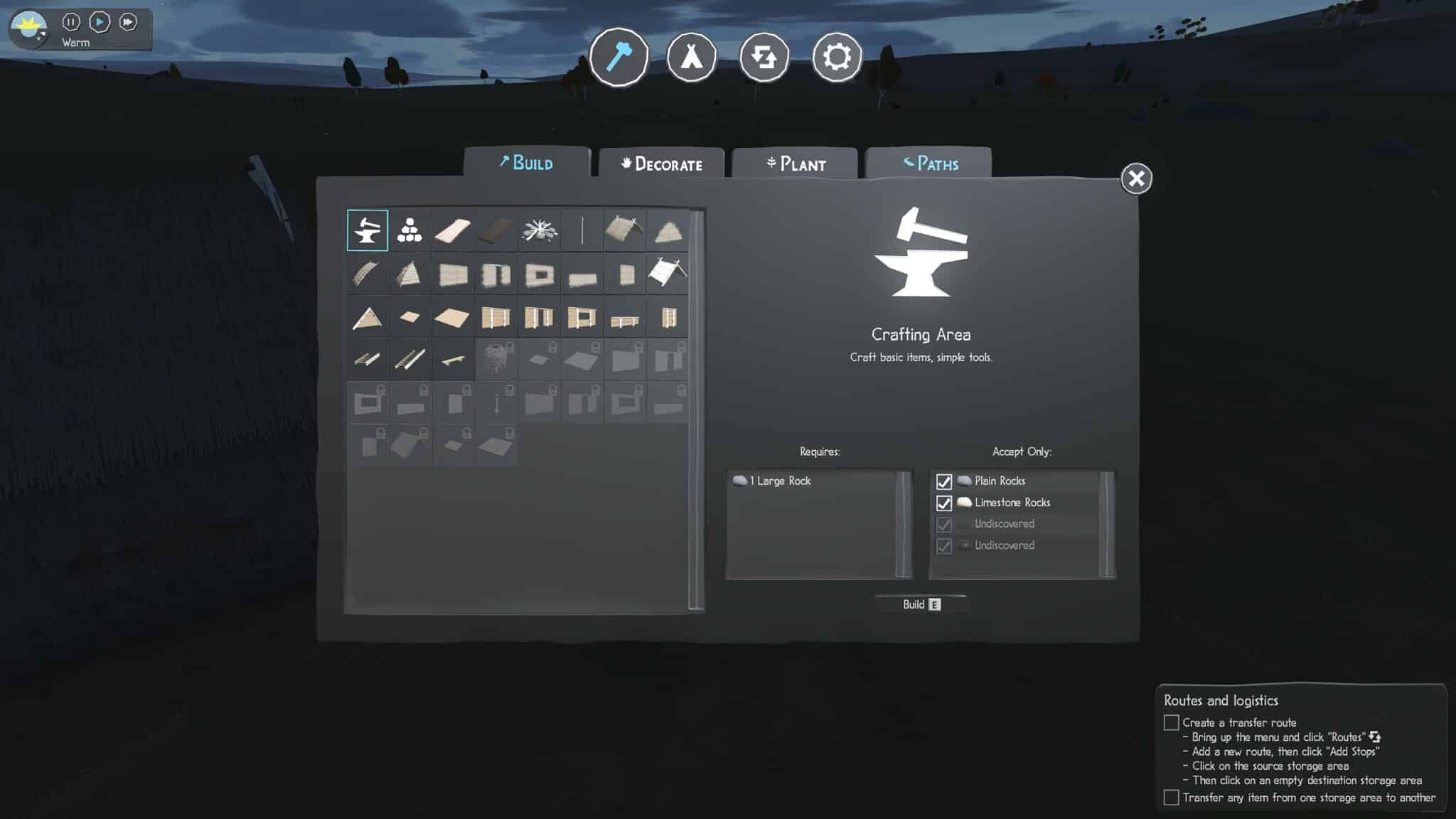
What of all the promises will ultimately ever end up in the game (and when) is of course still written in the stars. Often enough, appealing titles by small studios or individual developers hang around in Early Access forever.
And after all, Sapiens is so far not much more than a fun alpha version that you can have a few hours of fun with. The potential is definitely there, but so is the danger that it will never become a full-fledged game.
Editor”s conclusion
So I can”t quite understand why Sapiens stands at such a good average (current 86%) on Steam, although I can see why it appeals to many. There”s the flair of pristine and vastness along with the first-person perspective and the feeling of exploring and discovering the world.
But on the other hand, the graphics are still very unfinished and the title is played out after a few hours. The lack of further content and convenience features is too noticeable for me to have fun with it for too long. Even the actual gameplay loop of investigating, collecting and crafting doesn”t necessarily get better the longer I do it.
So for me, Sapiens joins the now rather long list of promising building titles in Early Access that are still far from completion and for which no one can give a guarantee that they will ever turn out as hoped. Therefore, I recommend that you perhaps take a look at a YouTube video, but not buy the title yourself for the time being – unless, of course, you want to support the developer specifically.

